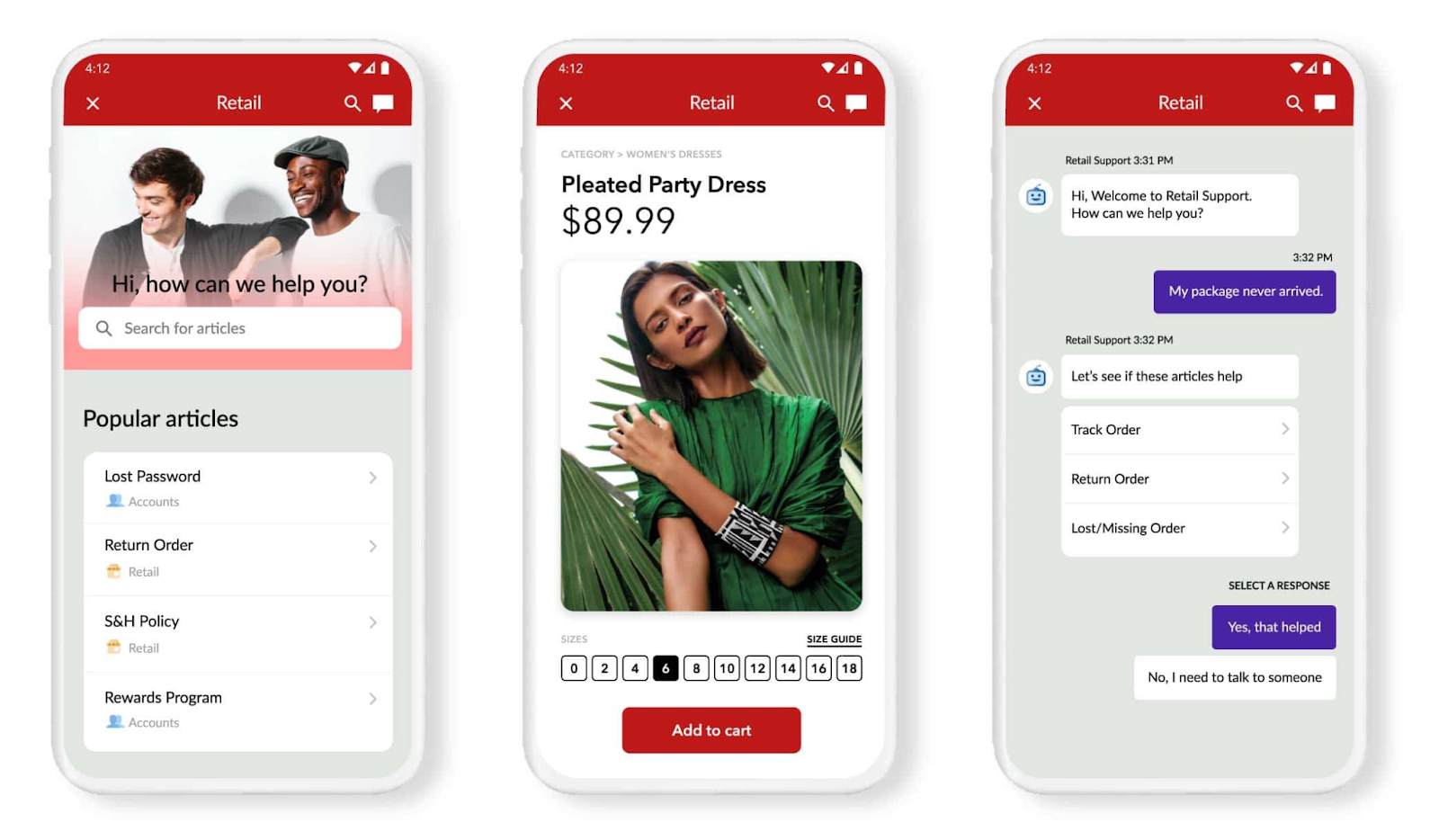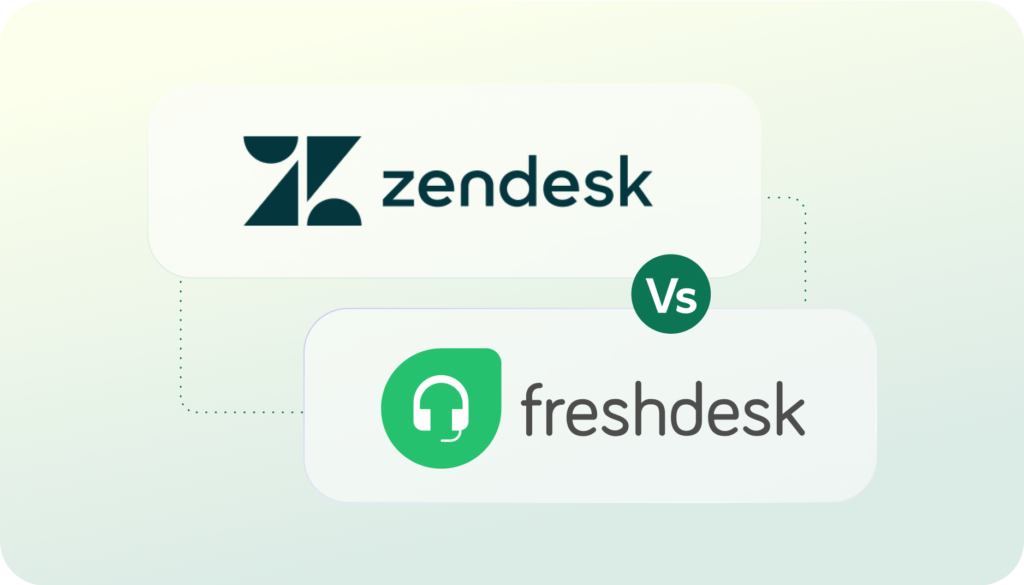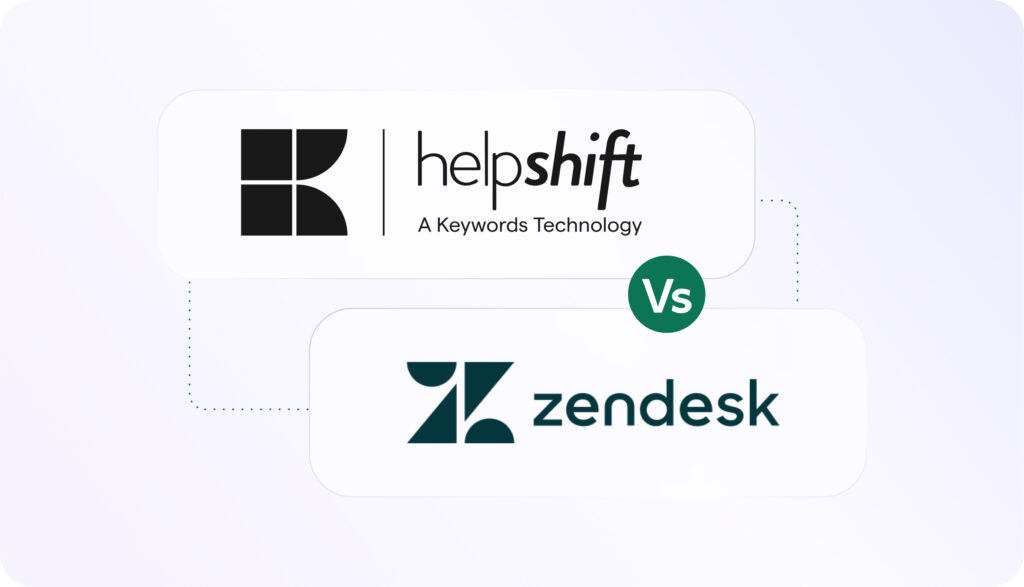In the ever-evolving digital marketing landscape, businesses that want to improve customer engagement and simplify marketing processes must keep up with the changes. One innovative tool that has emerged as a game-changer is chatbot marketing.
A chatbot is not just another AI program that can be taught to exchange instant messages with people. It has a considerable potential to bring your business to a higher level, attract more visitors to your app or website, and boost conversion.
In this article, we will delve into chatbot marketing, exploring its benefits, applications, success strategies, and the future it holds for businesses.
What Is Chatbot Marketing?
At its core, chatbot marketing involves the creation of AI-powered conversational agents that interact with users in real-time.
Chatbots simulate natural human-like interactions, offering users a seamless and personalized experience. They learn from their conversations and get better at answering over time. As a result, they can understand what users are asking and give them the information they need. This adaptability is a crucial strength that can help businesses refine their chatbot marketing strategies based on user feedback and evolving trends.
5 Benefits of Using Chatbots for Marketing
Using chatbots for marketing can bring your business the following benefits:
Instant Response and 24/7 Availability
The real-time nature of chatbots allows businesses to answer user queries, significantly improving customer satisfaction instantly. According to Outgrow, 64% of consumers named the 24/7 availability the best feature of chatbots.
This round-the-clock availability caters to diverse global audiences and considers the evolving needs of the modern, always-connected consumer. Chatbots can help customers immediately, so they don’t have to wait for help and thus feel like the brand cares about them.
Efficient Customer Support
Customers often ask similar questions, so it could be a waste of time for an agent to answer those questions over and over again. Even canned responses that have been a traditional tool for handling repetitive queries still involve human agents and can only contribute to increasing their workload.
Integrating a well-designed chatbot into the customer support team can be a transformative asset. Frequently encountered queries can be swiftly addressed by programming chatbots to extract relevant information from knowledge-base articles, presenting users with accurate and concise responses. This reduces the resolution time and gives users instant access to valuable insights.
In scenarios where queries surpass the predefined capabilities of the chatbot, these intelligent systems go a step further. They adeptly collect contextual information and user details, creating a comprehensive understanding of the issue. Armed with this detailed context, the chatbot seamlessly transitions the conversation to a human agent, ensuring a smooth handoff. This approach significantly minimizes the workload on human agents, who now have all the necessary information at their fingertips. It allows them to focus on more complex and strategic tasks that require a human touch.
Personalized User Experience
Chatbots can analyze user data to deliver personalized recommendations and content, enhancing the user experience. For example, in e-commerce, it is often difficult for a visitor to choose a product in an online store. They may spend lots of time comparing different items and eventually abandon the shopping cart.
However, a chatbot can act as a virtual shop assistant to help the shopper decide through interactive assistance. As a result, products or services can be sold within the AI chat with a couple of clicks. Moreover, a chatbot is available 24/7, so it can act much quicker and convert visitors into customers within minutes.
Improved User Engagement
Conversational marketing can enhance user engagement throughout the entire sales funnel. Chatbots can guide potential customers down the funnel much faster than traditional marketing campaigns. From initial brand awareness to post-purchase support, chatbots can guide users, answer questions, and provide recommendations. This continuous interaction streamlines the customer journey and allows businesses to gather valuable data on user preferences and behaviors.
A prime example is Airbnb, leveraging chatbots to enhance user engagement on its platform. The chatbot initiates conversations, helping users find personalized travel options based on their preferences. It assists throughout the booking process, answering queries about properties and ensuring a smooth experience. Even after booking, the chatbot engages users, providing check-in information and offering local recommendations. This approach streamlines the user journey, increases satisfaction, and fosters ongoing engagement.
How Can Chatbots Be Used for Marketing?
The versatility of chatbots extends across various marketing functions, proving their value in numerous areas:
- Lead generation. Engage potential customers, collect information, and qualify leads through interactive conversations.
For example, HubSpot’s chatbots engage website visitors in real-time conversations, asking questions to understand their needs and preferences. These chatbots can qualify leads by collecting information such as contact details, company size, or specific challenges the visitor is facing. The captured data is then integrated into HubSpot’s CRM, enabling businesses to follow up with leads more effectively and personalize their outreach based on the information gathered through the chatbot interactions.

- Assistance in retail apps. Guide users through purchasing, recommending products, and providing order tracking information.
In retail apps powered by Helpshift, customers can utilize a chatbot for seamless support. For instance, if a customer faces an issue such as a missing package, they can initiate a conversation with the chatbot. The chatbot, designed to provide assistance and guidance, will prompt users for relevant details, such as their order number. Based on the information provided, the chatbot can offer real-time support, track the order status, provide updates, and guide the user through any necessary steps for resolution. This interactive and user-friendly experience enhances customer engagement and ensures a swift response to their inquiries.

- User onboarding. Assist new users in navigating your product, providing guidance and support.
For example, Slack uses a ” Slackbot ” chatbot as part of its user onboarding process. Slackbot interacts with new users, guiding them through their features, settings, and functionalities. It provides helpful tips, suggests actions, and assists users in configuring their workspace. This interactive onboarding approach helps users become familiar with Slack’s interface and capabilities in a more personalized and engaging manner.

Here are some other examples of how chatbots can be employed in marketing:
- Survey and feedback collection. Gather valuable insights by conducting surveys and collecting feedback through chatbot interactions.
- Promotional campaigns. Deliver targeted promotions and discounts directly to users through personalized chatbot messages.
- Data collection for personalization. Use chatbots to collect user data and preferences for more effective personalized marketing.
- Event Promotion. Use chatbots to promote events by providing information, sending invitations, and handling RSVPs through interactive conversations.
- Content Distribution. Share content such as blog posts, articles, or videos, engaging users and driving traffic to specific marketing assets.
5 Tips for a Successful Chatbot Marketing Strategy
These tips will help you improve your chatbot marketing strategy. You can talk to your audience more effectively and keep your chatbot up-to-date for your marketing goals.
Understand Your Audience
Knowing your audience is crucial for developing a chatbot that can engage users effectively. Conduct thorough research to understand their demographics, behaviors, and preferences. Consider factors such as age, location, language, and cultural nuances.
Additionally, regularly analyze user data and feedback to stay informed about evolving preferences. Keep in mind that user preferences may change over time. Staying up-to-date with these changes ensures that your chatbot remains relevant and valuable.
By understanding your audience, you can implement features, language choices, and conversation flows that align with their expectations. This makes users happier and helps your chatbot succeed as it becomes a part of your audience’s online experience.
Furthermore, understanding user intent and sentiment is pivotal for developing an effective and intuitive chatbot. When users interact with the chatbot, discerning their intent becomes crucial. For instance, if a user expresses a need for a refund, the chatbot, equipped with smart intent recognition like Helpshift offers, can seamlessly guide them through the refund workflow. Integrating such capabilities lets your chatbot intuitively interpret user requests, ensuring a more personalized and efficient user experience.
In addition to understanding intent, gauging user sentiment is equally vital. Monitoring the emotional tone of user messages helps the chatbot respond appropriately or hand it off to agents. Whether users express satisfaction, frustration, or uncertainty, acknowledging and addressing their sentiments contributes to a more empathetic interaction.
Humanize the Experience
Make your chatbots sound more “human” by incorporating a conversational and friendly tone. Gone are the days of robotic and sterile communication – today’s users crave a personal experience. When your chatbots communicate in a natural and friendly way, users are more likely to engage and feel a connection with your brand.
Consider incorporating elements of humor, empathy, and warmth into the dialog. This makes the interaction more enjoyable for users and helps establish a positive brand image. Just like in face-to-face conversations, a little humor or a touch of empathy can go a long way in building rapport.
Additionally, use language that is easy to understand and mirrors how people speak. Avoid overly technical jargon or complex phrases that might alienate users. The goal is to create a seamless and comfortable experience where users feel like they are chatting with a helpful friend rather than a machine.
Customize responses based on user input and context, showing that the chatbot actively listens and responds thoughtfully. For example, addressing users by their first names or referencing previous interactions can create a sense of continuity and familiarity.
Consider exploring generative AI to enhance your chatbot’s conversational capabilities as technology evolves. Generative AI, leveraging Natural Language Processing (NLP), enables chatbots to provide responses that mimic human language, making interactions more authentic and engaging. Integrating generative AI into your chatbot strategy can elevate the user experience, offering human-like responses that resonate with your audience and contribute to a more meaningful and personalized engagement.
Learn from Mistakes
Regularly update and optimize your chatbot based on user interactions and feedback. A successful chatbot strategy adapts to its users’ ever-changing needs and preferences. You can identify areas for improvement and implement changes that improve the user experience.
Embrace a proactive approach to learning from your chatbot’s interactions. Analyze user queries, understand common pain points, and identify opportunities to provide more accurate and efficient responses. Regularly review chat logs to uncover patterns and trends that allow you to refine your chatbot’s knowledge base and response capabilities.
In addition to user interactions, pay close attention to feedback from real users. Whether positive or constructive criticism, the feedback gives valuable insights into how well your chatbot meets user expectations. Actively seek input through surveys, reviews, and direct communication channels to gather diverse perspectives and refine your chatbot marketing strategy accordingly.
Support Multiple Platforms
In today’s dynamic digital world, users interact with brands through multiple channels, from social media platforms to messaging apps and websites. Integrating your chatbots across these diverse channels creates a cohesive, omnichannel experience for your users. This integration expands the reach of chatbot marketing and enhances the overall user experience. Users appreciate the convenience of engaging with your brand wherever they are, be it a popular social media platform, a dedicated mobile app, or your website.
For instance, Starbucks customers can interact with the brand’s chatbot on various platforms, including the Starbucks mobile app and the Facebook Messenger platform. This allows customers to place orders, customize drinks, and locate nearby stores through a unified and consistent chat experience.
Moreover, seamless platform integration allows chatbots to gather valuable insights from various touchpoints. Analyzing user interactions across different channels provides a comprehensive view of user behavior and preferences. You can use these insights to refine your chatbot’s responses, personalize user experiences, and tailor marketing strategies to specific audience segments.
Support Multiple Languages
Supporting multiple languages as a part of your chatbot marketing strategy can significantly broaden your brand’s reach. Consider the linguistic diversity of your target audience and implement language options that resonate with different user segments.
Implementing multilingual support is not just about translation; it’s about cultural sensitivity and adapting the conversational style to suit different language nuances. Tailoring your chatbot’s language choices to align with cultural expectations ensures that users from various backgrounds genuinely connect with your brand.
Here’s an example: IKEA, the multinational furniture retailer, uses a multilingual chatbot on its website to assist customers. The chatbot is designed to understand and respond in various languages, making it accessible to a diverse customer base. Users can inquire about product details, find store locations, and get assistance in multiple languages, which enhances the overall customer experience.
What is the Future of Chatbots for Marketing?
Several emerging trends and technologies are shaping the future of chatbot marketing, such as:
Advanced AI Capabilities
- Recent advancements in Generative AI, particularly improvements in Natural Language Processing (NLP), elevate chatbot interactions to a new level. These enhancements enable chatbots to grasp user input more effectively, responding with increased understanding and finesse. Machine Learning (ML) seamlessly integrates with Generative AI, allowing chatbots to evolve and adapt continuously. ML algorithms empower chatbots to learn dynamically from user behavior, preferences, and past interactions.
- Additionally, incorporating Machine Translation broadens language support, ensuring a more inclusive and global user experience. Recent breakthroughs in Generative AI further enhance language capabilities, contributing to heightened contextual understanding and more sophisticated conversational exchanges. Together, these advancements underscore the ever-evolving landscape of AI, continually pushing the boundaries of intelligent and user-centric interactions.
Enhanced Personalization
- User profiling. Chatbots are becoming more adept at creating and utilizing user profiles to deliver personalized experiences. This includes understanding user preferences and past interactions and using this data to tailor responses and recommendations.
- Behavioral analytics. Integration with analytics tools allows businesses to track user behavior within chatbot interactions. You can use this data to refine chatbot marketing strategies, improve user experiences, and enhance personalization.
Integration with Emerging Channels
- Messaging apps. Chatbots are integrated into popular messaging platforms like WhatsApp and Facebook Messenger. This allows businesses to meet customers on their existing platforms, providing a seamless and convenient experience.
- Voice assistants and smart speakers. More and more chatbots can work with platforms that use voice commands, like Amazon Alexa and Google Assistant. This extends the reach of chatbot marketing to devices beyond traditional text-based interfaces.
Conversational Commerce
- E-commerce integration. Chatbots are playing a significant role in facilitating online transactions. They guide users through the purchase process, give product recommendations, and answer questions, enhancing the overall shopping experience.
- Payment integration. Some chatbots have built-in payment capabilities, allowing users to make purchases directly within the chat interface, thus streamlining the conversion process.
Conclusion
As we navigate the dynamic world of digital marketing, chatbot marketing stands out as a powerful tool to enhance customer engagement and streamline marketing processes. Chatbots give businesses distinct advantages, such as 24/7 availability, instant responses, personalized user experience, marketing automation, and improved user engagement.
Understanding your audience, humanizing interactions, learning from mistakes, and supporting multiple platforms and languages are crucial to crafting a successful chatbot strategy. The future promises advanced AI capabilities, enhanced personalization, and integration with emerging channels, signaling exciting business opportunities.
The future of marketing is conversational, and chatbots are leading the way.





